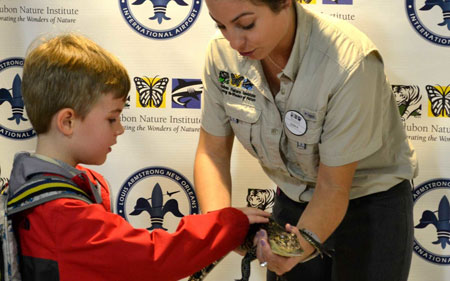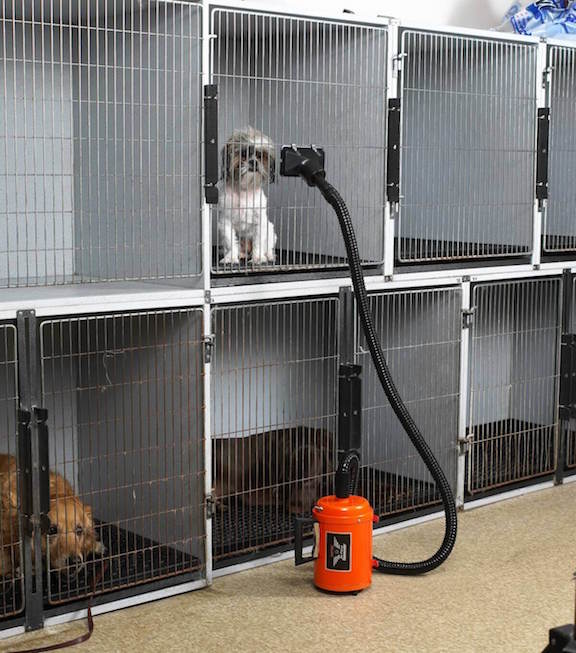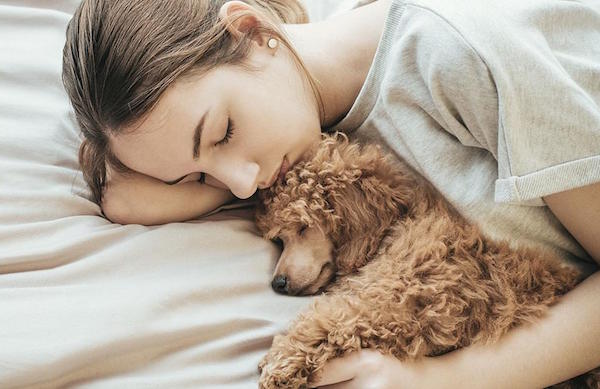Alligators At The Airport
Erin Burns, Louis Armstrong New Orleans International Airport
 Flying can be a stressful time for many people. As a result, airports have brought out emotional support animals, usually dogs, to help people de-stress. Some of these dogs are then available for adoption, which is a good a way to find homes for these animals. However, at the Louis Armstrong New Orleans International Airport, they had something very different going on. Erin Burns is the Director of Communications at the Louis Armstrong New Orleans International Airport. She tells us that instead of dogs at their airport, they actually had alligators.
Flying can be a stressful time for many people. As a result, airports have brought out emotional support animals, usually dogs, to help people de-stress. Some of these dogs are then available for adoption, which is a good a way to find homes for these animals. However, at the Louis Armstrong New Orleans International Airport, they had something very different going on. Erin Burns is the Director of Communications at the Louis Armstrong New Orleans International Airport. She tells us that instead of dogs at their airport, they actually had alligators.
The Louis Armstrong New Orleans International Airport had a partnership with their local Audubon Nature Institute. The institute does a great job around their community with a zoo and an aquarium. They also provide an educational program where they go around giving people an up close and hands on experiences with different types of animals.
Of course one of the most recognizable animals that is representative of the Louisiana wetlands is the alligator. So the airport thought it would be a nice passenger experience to allow people, when they land into New Orleans, to interact with a juvenile alligator at the baggage claim area.
While it might not necessarily calm you, Erin explains that they saw some people who were a little standoffish at first and didn't necessarily want to touch the alligator, but yet they were intrigued. They then said they would get close enough to take a picture with the alligator, and then when they took a picture, they just couldn't help but to touch the alligator.
Erin said they thought it was a very successful program and they were happy with all the attention received. As a result, information about their airport and the issue with animals in their wetlands was being shared, and that was what it was all about.
So when you visited the airport, were you able to hold the alligator? Erin explained that the Audubon Nature Institute provided very knowledgeable outreach staffers who held the alligator. Passengers were not allowed to hold the alligators, but the staffers guided them to use two fingers and touch the alligator all along it's back and spine. This allowed a person to feel the alligator skin.
 They also had a little backdrop and encouraged people to take selfies or snap a couple pictures with the alligators. They were then able to share the pictures on social media or send them to their family and friends and tell them what they met at the New Orleans airport. This was probably the first time these people have ever been near an alligator and they loved getting their picture taken with them.
They also had a little backdrop and encouraged people to take selfies or snap a couple pictures with the alligators. They were then able to share the pictures on social media or send them to their family and friends and tell them what they met at the New Orleans airport. This was probably the first time these people have ever been near an alligator and they loved getting their picture taken with them.
These alligators posed no harm. They were juvenile alligators and were usually between one and three years old and about three feet long. The handlers were very experienced and they held the alligators in a very specific way so that there was no real threat to the passengers. As a result, they didn't have the mouths of the alligators closed off in any way.
Dr. Debbie states that in her practice when they handle reptiles, they have certain hygiene protocols that they have to follow. How could the airport ensure that people were using proper protocol when touching the alligators? Erin stated that there was a sanitizer available and their outreach workers were very, very persistent about making sure that everyone used the hand sanitizer after they touched the alligators.
When these alligators became adults, were they going to be held in captivity? Or, since they were so young, would they ever be released? Erin said that Audubon Nature Institute had partnerships with local alligator farms, so when they reached a certain age, they were retired.
Click here to see some of the selfies.
Visit Website
How To Build The Perfect Litter Box - Dr. Debbie
 One sniff upon entering your home and you recognize the unmistakable odor of cat urine and feces. Simba has used your entry hall as his litter box again. But before you lose your temper - stop. By scrutinizing the environment through your cat's eyes, you will likely discover the cause of his toileting mishaps.
One sniff upon entering your home and you recognize the unmistakable odor of cat urine and feces. Simba has used your entry hall as his litter box again. But before you lose your temper - stop. By scrutinizing the environment through your cat's eyes, you will likely discover the cause of his toileting mishaps.
Elimination issues are a main reason for veterinary visits and a primary reason for relinquishment of cats at shelters. House soiling problems can be multi-factorial, with an overlap of behavioral, environmental and medical causes. Feline house soiling can be managed, however, with sleuth work and patience. The challenge is to think like a cat.
First and foremost, say this and repeat it…"My cat does not eliminate out of the litter box to get even with me." Cats do use urine and fecal scent marks to communicate territory, but this isn't done with spite or in effort to "get even" with you. Inappropriate elimination is a cat's way stating that something isn't right in their world. Understanding this is key before tackling feline house soiling. Focus on what's wrong in Simba's toilet area, not on how the house soiling makes you feel.
Start With a Vet Check
Cat owners often struggle with house soiling mishaps for months or years before enlisting help from their veterinarian. But, seeing the veterinarian should be the first step, since health disorders may be at the root of some house soiling issues. Your efforts in restoring litter box usage will be doomed if an underlying medical cause is not addressed at the same time.
Size Does Matter
Make sure your cat's litter box is of adequate size to allow maneuvering. Litter box size should be one and one half times the length of cat's body length. Height of the edge also matters. For older kitties, try lower profile litter boxes or plastic under bed storage boxes. An arthritic older cat won't complain or cry in pain with arthritis, she'll just chose to eliminate elsewhere.
Consider the View
Cats don't want to be startled while in the loo. Don't place the litter box in a high traffic area where people and pets are always coming and going. Cats prefer a low traffic area where they can have an eye out on things.
Don't place the litter box near appliances which give off noise, vibration and heat, all which disturb your cat while eliminating. Once a negative aversion is created, your cat may not return to use that box in the future.
Ditch the Litter Box Cover
While some nervous kitties prefer the privacy of litter box covers, the majority of cats dislike the tight quarters and limited ventilation litter box covers provide. Consider how you feel in a public porta-potty. Do you like to touch the walls when inside? Sure, people like the way the lid contains odors, but does it really matter how little odor comes from the litter box when your cat is pooping on your oriental rug?
Provide More Than One Box
A common error is assuming that one litter box is all your cat needs. What cat owner loves the litter box and relishes seeing more of them in the home? But the more the better when it comes to faithful litter box usage, especially with multiple cats. The general rule is to provide one more box than the number of cats. Some cats share litter boxes, others will not. Unless you provide alternate sites, you may have elimination issues in multiple cat homes.
 Another special consideration is differences in cat's personalities - timid cats may avoid crossing paths with other more assertive pets in home. Be sure to provide litter box sites that won't be blocked by other animal's movements.
Another special consideration is differences in cat's personalities - timid cats may avoid crossing paths with other more assertive pets in home. Be sure to provide litter box sites that won't be blocked by other animal's movements.
If you live in a multilevel home - you must provide litter box sites on each level. This is especially important in multi-cat homes, those with senior cats or those with health conditions.
The Pick of Litters
Litter texture preferences vary and there are many choices from scoopable, clay, crystals or natural litters. However, in one research study of cat's litter box habits, it demonstrated that the majority of cats prefer fine grained scoopable clay based litters that have carbon as their odor absorbing ingredient. Every cat is different though, so try other litter varieties until you find your cat's preference.
Skip the Scents
The verdict is still out on what odors cats prefer, but avoid heavily scented litters or deodorizers if your cat is missing the box. Interestingly enough, one study showed cats preferred cedar odors while avoiding citrus and floral scents, while another study concluded cats preferred bleach smells to other scents.
Kitty Litter Depth
Ideal litter depth is 2 inches - more isn't always better. Some cats thrive on scratching the bottom of the pan, which is obscured by excessive amounts of litter.
Keep It Clean
Cats are fastidious by nature and will avoid using a soiled or smelly box. The overall cleaning frequency depends on the number of cats in the home. General advice is to scoop twice a day and deep clean the litter pan weekly. Change out clumping litter every 2-3 weeks.
Build It and Kitty Will Use It
By building your cat's dream litter box, your cat will find litter box nirvana and you'll come to enjoy a better relationship with your kitty family members without those unwanted "presents" in the foyer.
Featured veterinarian known as "Dr. Debbie" on national pet radio program, Animal Radio. Ebook author of "Yorkshire Terriers: How to Be Your Dog's Best Friend"; "Pugs: How to Be Your Dog's Best Friend"; "Mini Schnauzers: How to Be Your Dog's Best Friend"; and "Shih Tzu: How to Be Your Dog's Best Friend." Dr. Debbie's books.
Visit Website
 The Dogfather's Grooming Tip with Joey Villani
The Dogfather's Grooming Tip with Joey Villani
Are Kennel Dryers Safe?
With everything that is going on in the Grooming Industry because of social media about injuries to pets, the general public is looking to ban certain equipment. One piece of equipment in question is the kennel dryer. If you are not familiar with kennel dryers, they are used to finish your pet's coat after a grooming. These usually include a high velocity dryer. A good velocity of air comes out, which dries the pet quicker, leaving their coat straight and removing a lot of the undercoat. After several tragic accidents, many have become frightened of putting their animal inside the dryer. Dogfather Joey Villani addresses this problem head-on, saying there is nothing inherently wrong with these machines and instead of banning this equipment, which could cause more damage, blame the bad groomers.
One thing Joey has noticed is that when dogs get older, and for some reason and he thinks it's just the sound of the noise level, it affects them. He's even seen dogs seizure because of the noise level. To help, a groomer might even put a hoodie over their heads and around their ears to keep it quiet and to keep the dogs comfortable and then monitor them.
However, brachiocephalic dogs should never be put in a kennel dryer. These are dogs with flat faces, like Bulldogs, Boston Terriers and Shih Tzus. The best way Joey can explain it, is to drive at 60 miles an hour down the highway. Stick your head out the window and you will have a hard time breathing. That is what a kennel dryer feels to these dogs when they're in these kennels. An experienced groomer should know which dogs can and can't go in a kennel dryer.
Think of a human who is working on the docks and they're driving a forklift. If that person is experienced and has the proper credentials to run the machinery, you're going to get something that's expedited, careless free and done well. If they're not, people can get injured and it can also just make the whole day horrible.
Same thing with pet grooming. If a groomer is not qualified to use the equipment, then don't have them use it. But if they're qualified and you trust your groomer and ask questions, that Kennel dryer could be a really good experience for your pet.
 Many kennel dryers have timers on them so a dog is not forgotten that will automatically shut off after a period of time. However, some groomers buy the less expensive kennel dryers that don't have this feature and they will actually make their own. Making your owned kennel dryer is something that Joey definitely does not recommend. However, if a groomer is going to do it, there's still a way to monitor it. You need to put a temperature gauge up in the dryer kennel so you can monitor the temperature inside the kennel. You also want to check the pet every 20 minutes.
Many kennel dryers have timers on them so a dog is not forgotten that will automatically shut off after a period of time. However, some groomers buy the less expensive kennel dryers that don't have this feature and they will actually make their own. Making your owned kennel dryer is something that Joey definitely does not recommend. However, if a groomer is going to do it, there's still a way to monitor it. You need to put a temperature gauge up in the dryer kennel so you can monitor the temperature inside the kennel. You also want to check the pet every 20 minutes.
Even if a groomer has a kennel dryer with a timer, they sometimes fail. Because of this, Joey uses a backup cooking timer as well. However, because the grooming industry is not regulated, a groomer doesn't necessarily have to know the proper way to use the equipment.
Joey explains this by telling you to think about a forklift driver. The only thing that they need is an OSHA class. Joey also works with stagehands and he says he has forklift drivers that are not OSHA certified because they don't have to be. Some of them have even been driving forklifts safely for 20 plus years. But then you have someone that's never been on a forklift in their life and they take the class, they then say that they can now drive a forklift. Joey explains that they can't, because they've actually never driven a forklift, all they have is a piece of paper.
You should always ask questions of your groomer. Ask what you need to know if your pet's going into a kennel dryer. Ask them to tell you about the procedure. If they just say that they put them in, adjust the temperature and walk away, ask them if they monitor them and if so, how do they monitor them? Ask what the temperature should be. They should be able to answer all of your questions, no matter what the questions are, because no question is stupid. Don't worry if you ask too many questions, as you just want your pet safe. Your groomer should be able to answer them where you feel comfortable.
So don't automatically say you don't want to use a kennel dryer, because you might have the dog or cat that actually would benefit by these dryers.
Animal Radio News - Lori Brooks
 CBD For Pets
CBD For Pets
No doubt you've seen all the ads for CBD pet products. But why doesn't your vet tell you to use any of those products? Probably because there are not enough scientific studies yet; CBD products are not regulated so it's hard to be certain of its ingredients or the potency of the CBD in it; and your veterinarian is probably not allowed to mention CBD. Why? Many states have legalized marijuana for humans in some form. However, vets have been left out of most state laws concerning cannabis, so they can only talk about CBD if their clients bring up the subject first. California is the only state that has passed legislation that specifically authorizes veterinarians to discuss cannabis with their clients. If you are going to go ahead and buy CBD on your own, you should know what you're buying. Experts say for any CBD product for you or your pet, your best bet is to find a company that has commissioned independent third party testing and can provide a Certificate of Analysis, or COA. The lab results should show how much CBD (and THC) the product contains, as well as how the product did in tests checking for contaminants such as heavy metals and fungicides. If you can't find a COA on the company's website or the company refuses to share it, that's a red flag. Also, look for products that have a seal from the National Animal Supplement Council, which increases the chance that a product has been made with safe ingredients in a clean, highly controlled environment. A couple things to remember is that a study from Cornell University found that 2 mg of CBD per kilogram of your dogs weight twice daily "can help increase comfort and activity" in dogs with osteoarthritis. That is kilograms not pounds. One kilogram equals 2.2 pounds. Finally, the quality of CBD degrades the longer you have it. It has a shelf life. Remember, CBD oils and treats should be kept at room temperature away from bright lights or sunlight. Also, heat and extreme cold can dramatically change the chemical composition of CBD. So, if you have oil that has changed colors, it's probably damaged and should be thrown away.
Pet Trends Follow Human Trends
If you're looking at the year ahead, some of the biggest trends in pet care are in line with trends that have recently emerged for humans. According to a survey of 1,000 dog and cat owners, this will be the year of smart technology, alternative therapies and diets that mimic human choices. Trend 1: From fitness watches that track activity to on-demand food delivery services, apps and smart technology dictate the way we live. According to survey respondents, pet owners are motivated to give pet tech a try, especially if it means it will provide them with a better grasp of their pet's health and wellness. One in 4 pet parents admits they spend more on technology for their pets than for themselves. Of those who currently use health-related pet tech for cats and dogs, about 45-percent use nutrition apps and veterinary telemedicine, with 31-percent using fitness trackers. Trend 2: The survey found that of pet owners who have tried alternative therapies for themselves, 74-percent have used them on their pets as well. Most likely it was CBD and hemp-based products. Nearly 40-percent said they used CBD products on their pet for a specific behavioral condition, for pain relief after surgery or on a flight. Another trend is alternative therapies with about 80-percent of pet parents trying aromatherapy or reflexology. More than a quarter of pets have had alternative therapies like massage, physical rehab, chiropractic and acupuncture. Trend 3: People want higher quality pet foods and diets. Pet parents are much more cognizant of the types of foods they feed their furry family members. Of those surveyed, 70-percent of people who follow a diet for themselves admitted to putting their pet on a special diet too. For example, almost half of pet parents who eat organic foods feed their pets organic diets. And those pet owners on a protein-rich diet feed their pets protein-rich diets as well.
 Women Sleep Better With Dogs Than Human Partners
Women Sleep Better With Dogs Than Human Partners
There's a study that showed women sleep better next to dogs than their human partners. The study published by researchers at Canisius College in Buffalo, New York, interviewed nearly a thousand women. Fifty-five percent of them shared the bed with at least one dog and 31-percent shared their bed with at least one cat. Fifty-seven percent of the women shared the bed with a human partner. Researchers found dogs were less likely to wake their owners in the middle of the night than cats and humans, who were equally disruptive to women's sleep and didn't provide the feelings of comfort and security that dogs do. By the way, dog owners also reported earlier sleep and wake times than cat owners and those who have no pets.
 Listen to the entire Podcast of this show (#1203)
Listen to the entire Podcast of this show (#1203)





